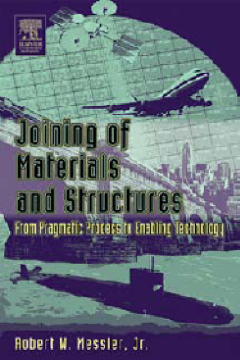
Additional Information
Book Details
Abstract
Joining of Materials and Structures is the first and only complete and highly readable treatment of the options for joining conventional materials and the structures they comprise in conventional and unconventional ways, and for joining emerging materials and structures in novel ways. Joining by mechanical fasteners, integral designed-or formed-in features, adhesives, welding, brazing, soldering, thermal spraying, and hybrid processes are addressed as processes and technologies, as are issues associated with the joining of metals, ceramics (including cement and concrete) glass, plastics, and composites (including wood), as well as, for the first time anywhere, living tissue.
While focused on materials issues, issues related to joint design, production processing, quality assurance, process economics, and joint performance in service are not ignored. The book is written for engineers, from an in-training student to a seasoned practitioner by an engineer who chose to teach after years of practice. By reading and referring to this book, the solutions to joining problems will be within one’s grasp.
Key Features:
· Unprecedented coverage of all joining options (from lashings to lasers) in 10 chapters
· Uniquely complete coverage of all materials, including living tissues, in 6 chapters
· Richly illustrated with 76 photographs and 233 illustrations or plots
· Practice Questions and Problems for use as a text of for reviewing to aid for comprehension
* Coverage all of major joining technologies, including welding, soldering, brazing, adhesive and cement bonding, pressure fusion, riveting, bolting, snap-fits, and more
* Organized by both joining techniques and materials types, including metals, non-metals, ceramics and glasses, composites, biomaterials, and living tissue
* An ideal reference for design engineers, students, package and product designers, manufacturers, machinists, materials scientists
"If one is seriously interested to any extent in the process of joining in the broadest terms this must be a significant source of information" - International Journal of Adhesion and Adhesives
"This is one of the most comprehensive texts available for the reference shelf on joining technologies. Very Highly Recommended!" - Adhesives & Sealants Newsletter, September 2006
"Where it is proposed to join materials or structures in a new or unconventional way not already proven by use in service, this book will give a guide on methods to be adopted and problems which could arise. The book of some 800 pages with many photographs and illustrations is easily readable and a useful source of information on this most important aspect of modern construction." - W.A. Black in Building Engineer, April 2005
